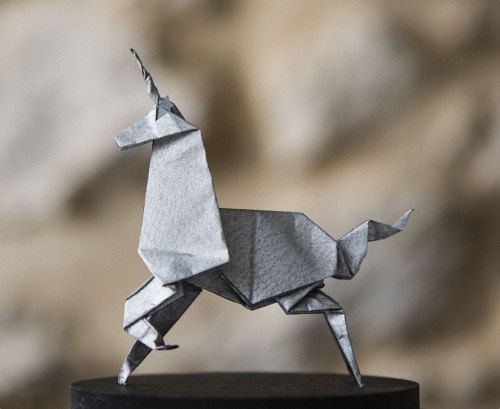Autumn is in the air. In the tap-tapping of boots on pavement; in the crackle of falling leaves; in the rumbling roar of maize-wearing Wolverines. Trees hang heavy with apples, ripe for picking. Coffeehouses waft invitations of pumpkin spice and cinnamon out into the streets. And then, there’s the chill – a blessing and curse at the same time. Some days are energetic. Grab a scarf and a walking companion and the cold disappears. But other days are drizzly, gray, and frankly, a bit seasonally depressing. When days like those hit, why not grab some perfectly patterned square bits of paper and fold away the stress of classes and decorate your room at the same time?
This past summer, while at home rummaging around the craft closet for school supplies, I came across an old packet of Origami paper and felt my childhood flash back. The hours I could spend, practicing patience, dedicating a long-attention span to folding and unfolding paper, to licking and nursing the cuts on my fingers. The pleasure of creating a menagerie of cranes, penguins, dragons, rabbits, fish, foxes, elephants, (but mostly cranes), and set them up on the table before me. Made from my own hand.
I remembered reading the children’s book, “Sadako and the Thousand Paper Cranes” by Eleanor Coerr, for a first grade book report project. An inspirational book, indeed, that makes you want to go out and make something, do something, to put a smile on someone else’s face. My mom and I had toiled away to make a crane for each student in the class, and it was all worth the effort.
With such good memories folded neatly in my brain, I decided to bring the packet of multi-colored pre-cut squares with me to college this year. Every once in a while, I take out a sheet, put on a YouTube tutorial video, and focus on the folds – a great distraction from homework.
The word ‘origami’ comes from the Japanese ‘ori’ meaning folding and ‘kami’ which means paper. The art of paper folding is mostly credited to the sixth-century Japanese monks who created simple, religious designs for Shinto ceremonies. Paper folding spread around the world, to Spain, the Middle East, Britain and the US, and continues to be a flourishing art form today.
One of the great marvels of origami is that all it requires is one piece of square paper. Pre-cut squares, some plain-colored, some patterned, can be bought at craft and stationery shops for $1-4, depending on the paper count. Not too crippling an expense when you consider that no glue, scissors or tape are necessary! Ingenuity and patience is all that’s needed, that and some good, clear instructions.
Most origami packs come with some poorly drawn step-by-step instructions. But, we’re in the digital age and can and should take advantage of YouTube videos (it’s loaded with them!) and dedicated websites like origami-instructions.com and origami.me. The trick is to master a few basic folds (inside and outside reverse, the petal fold, the valley and mountain fold) and a couple of bases (bird base, diamond base, kite base) and then a world of paper folding will, dare I say it, unfold for you. Soon you will be surrounded by ninja stars, hopping frogs and lotus flowers.
The great thing is that origami can be as private as you want it to be. No one has to know if your rabbit looks more like an earless rat. The art is in the doing and the concentration, the manual labor, the effort. Frustration and mistakes may come, but that’s all part of the art process. Of course, once you’ve mastered the crane, you will always have a party trick up your sleeve. A paper napkin can, with a bit of dexterity, be transformed into a thing of wonder! Your friends’ jaws will drop as you crease and sculpt and reveal a creature whose wings flap when they tug its tail.
And who knows? One day, you could be like Florigami founder and origami artist, Floriane Toultou!

So let the scarves, the autumn days, and your stress unfold – and indulge yourself in a little bit of paper magic. You’ll be glad you did!

